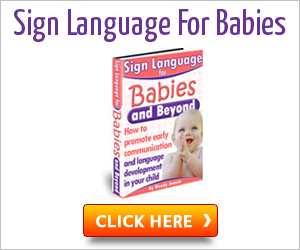American Sign Language
American Sign Language is a language that uses physical means of communication, such as body language and lip patterns, instead of oral sound in order to communicate. The person simultaneously uses their hands to show shapes, orientation and movement of the hands, arms or the body, and also facial expressions to convey the message or express thoughts.
American sign languages as in other sign languages is used mostly among the deaf, which can include interpreters and friends and families of deaf people as well as people who are deaf or hard of hearing. Just as is the case of spoken language, sign language also differs from one region to another.
Every language has its own sign language developed for and by people who are deaf in that particular language speaking community. Just as in spoken language where the place and culture has an impact, sign language also develops in the same manner influenced by these conditions.
So they learn to keep their identities intact, through time in roughly the same areas of influence as that of the locally spoken languages. This will occur often even if though there is no connection between sign language and other regional languages. Similarly with the America sign language.
Exceptions to this include regions which speak the same language but still have a variety of sign languages. Variations within a national sign language can usually be connected to the geographic location of residential schools for the deaf people.
International Sign that was previously known as Gestuno is used mainly at international Deaf events such as the Deaflympics and meetings of the World Federation of the Deaf. Recent studies assert that International Sign is a kind of an artificial language, they conclude that it is more complex than a characteristic pidgin and indeed is more like a full-signed language.
Sign languages are linguistically quite complex and thorough in comparison with other spoken languages, despite the common misconception that they are not real languages.
American Sign language like the other sign languages feature signals and actions which need not necessarily have a relationship to what they are referring to just as in spoken language where everything does not go according to a set rule. Nor are they a visual version of an oral language. They have an extremely well-developed grammar and can efficiently discuss or debate on various types of abstract as well as precise topics.
Common linguistic features of deaf sign languages are extensive use of classifiers, a high degree of inflection, and topic-comment syntax. Many only one of its kind linguistic features emerges from sign languages’ ability to produce meaning in different parts of the visual field simultaneously.
You will be surprised to know that almost anybody can understand sign language as it involves the use of intricate hand signs, body posture as well as facial expressions.
Sign languages are definitely not related to oral languages. A lot of people are mistaken that a sign language is invented by people who can hear and are related by gestures to the oral language. The manual alphabet used in American sign language, mostly for proper names and technical or any other specialized vocabulary.
The use of finger spelling was taken as a proof oral languages get simplified when they are incorporated in sign language, However, sign language is just a simple tool existing with many others. Finger spelling can sometimes be a source lexicalized signs that consist of new signs. The sign language that has been developed specially for the deaf is not dependent on any spoken language and has been progressively developing based on its own norms.




